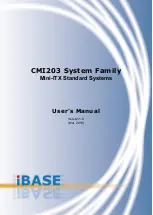
RPPD
5-2-55, Minamitsumori, Nishinari-ku, Osaka 557-0063 JAPAN
Phone: +81(6)6659-8201 Fax: +81(6)6659-8510 E-mail: [email protected]
EM-1693 Rev.11 P. 7 / 7
■
SENSOR EXCITATION ADJUSTMENT
You can change the sensor excitation voltage with the sen-
sor excitation adj. located behind the front cover. If you
need to change it, check that the required current is within
the specification.
V
A
Ammeter
Voltmeter
+
–
OUTPUT 1
1
2
U(+)
V(–)
POWER
7
8
+
–
INPUT 1
3
4
+
–
OUTPUT 2
10
11
+
–
INPUT 2
9
6
5
SENSOR
EXC.
• How to Change the Excitation
A voltmeter and ammeter of class 0.5 or better accuracy are
required.
1) Connect the voltmeter across the terminal 9 – 6.
2) Connect the ammeter to terminal 9.
3) Turn the potentiometer until the meter shows the desired
value.
Check that the current value indicated on the ammeter
is within the allowable limit. If the value is greater than
the limit, lower the voltage value or connect a separate
power source. Otherwise, the transmitter may fail.
25
5
12
24
60
120
CURRENT (mA)
VOLTAGE (V)
Voltage (V) × Current (A) ≤ 600mW
MAINTENANCE
■
TROUBLESHOOTING
Refer to the flow chart below.
Checking & Maintenance
To
TERMINAL CONNECTIONS
End of Checking
Is the power supply voltage (Terminal 7 – 8) at the proper level?
Is the load connected to sensor excitation within allowance?
Check that the load resistance meets
the described specification.
All wires connected
according to the connection
diagram?
Is the PL1 blinking
according to the input signal?
To
HARDWARE SETTING & CALIBRATION,
Refer to the sensitivity adjustment.
Check the input connection again and make
sure that the input matches descriptions
in the ordering information sheet.
No
Yes
No
To
HARDWARE SETTING & CALIBRATION
,
Refer to the sensitivity adjustment.
No
Yes
Is the PL2 blinking
according to the input signal?
Yes
Yes
Check the input connection again and make
sure that the input matches descriptions
in the ordering information sheet.
LIGHTNING SURGE PROTECTION
M-System offers a series of lightning surge protector for
protection against induced lightning surges. Please contact
M-System to choose appropriate models.

























